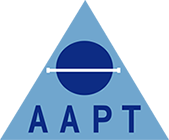News
Fifty Shades of Green
Anita Hardy Trainee APT, reports on her observation work with the Ambulance Service
After spending the best part of last year and half of this being observed by paramedics and technicians from East Midlands Ambulance Service, who wanted to learn more about the role of mortuary staff and the post mortem process, I decided to fulfil a childhood dream and return their kind offer for a ‘ride out’ with a local ambulance crew.
I wanted to further understand the role of the paramedic and how they respond to deaths in the community. We often have patients arrive with us who, despite the paramedics and technicians best efforts, they were unable to save. I was curious to know more about their systems of work and what advanced life support they were able to offer a patient to try and prevent them coming through the mortuary doors, and how they supported relatives of those who are deceased at home. What followed was an absolutely amazing insight and education into this exclusive world.
The shift began at 7:30 in the morning and already the jobs were stacking up. After a quick brief with Mel and Mark and a stock check on the vehicle we were whizzing off under blue lights to our first call. An elderly gentleman with dementia had taken a tumble in his nursing home and had cut his face. Mel and Mark did his initial observations while they tried to understand what had happened. I was surprised at the level of care they provided to their patient, even sitting and helping him with his breakfast in preparation for a lengthy hospital wait in A and E. After transporting the patient in the hospital and handing over to the Doctors, we were straight back in the vehicle. The crew were given their lunch break as amazingly there were no calls waiting. As the crew were on an 8 hour shift they were entitled to a measly 30 min lunch break. I almost felt guilty for the luxury of an hour break at work.
After our quick refuel we were off to a doctor’s surgery to transport a patient in to A and E who had a suspected collapsed lung. I knew it was unlikely that we would be attending a death in the community so I took my chance to question Mel about how this is handled. I was surprised to hear that they have no formal training in bereavement and are left to fend for themselves when it came to issues around death. They were unsure of the initial processes and how the coroner’s involvement would impact a family. They took the opportunity to ask me some questions and I invited them to attend future observation sessions I had planned. I realised how beneficial the sessions were that I had been doing and endeavoured to make it a continued opportunity.
After again leaving our patient at A and E we were immediately summoned to an incident at a garage that involved two young lads who had been burnt by a chemical. Again Mel and Mark flew in to action and I helped carry their mountains of equipment and assisted in a very limited capacity with their treatments. Both patients had nasty burns and would need immediate treatment at A and E. With the arrival of the second crew we transported our patient in. Again Mel was in the back with me and the patient and she kept him calm while speaking to his father. I noticed how gentle she was with the patient and how she protected his dignity at all times, something which I am very passionate about myself. After arriving back at A and E for the third time we booked the patient in and handed him over to the medical team.
I was amazed how quickly the shift had gone and at 4pm we were back at base. Mel and Mark handed over to the afternoon shift what supplies were needed and the next crew were straight back out ready for the next call. I was so impressed with how the team handled themselves and their patients often under immense stress and time constraints. I had always thought that they would be attending lots of calls within their shift but was surprised that we had only managed to attend 3. I was fascinated to learn about issues they faced as part of the wider NHS team and realised we were all not so dissimilar in what we were trying to achieve for our patients. I can only offer my heartfelt thanks to EMAS for allowing me this opportunity to get a brief glimpse into their world and express how brilliant they are in every aspect of their role. I hope that by working closely with them in the future we can all benefit from a shared knowledge and understanding.
